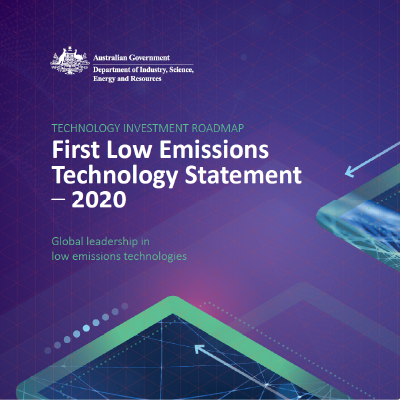The outcome is not technology, it’s lowering emissions
Australia’s Chief Scientist, Dr Alan Finkel, has presented an optimistic picture of Australia’s shift to clean energy, predicting hydrogen will quite quickly become cost-competitive in some industries.
Addressing an online forum held by the ANU Energy Change Institute, Dr Finkel said once hydrogen became the fuel of choice for trucking, trains and shipping, costs would fall fast, allowing it to be adopted more widely.
Dr Finkel also suggested that household gas networks could shift to 10% hydrogen this decade, accelerating the shift to a hydrogen economy.
The National Hydrogen Strategy, released in November 2019, found that hydrogen can be safely blended into gas networks at volumes of up to 10% without the need to change household meters and appliances.
Dr Finkel said that represented a significant step up in hydrogen production.
Producing that volume of hydrogen would need about 1 gigawatt of electrolyser capacity to split the water molecules, which is three to four times current annual global production. That would mean an “enormous move along the learning curve,” he said.
Solutions would differ city to city and suburb to suburb, but in areas where gas use was especially high, substituting gas with hydrogen could be cheaper than switching to electricity. Coupled with the existence of gas infrastructure and the time it would take to shift homes off gas, “there’s a lot of reason to give people a quicker solution to reuse what they’ve got” by substituting natural gas with zero-emissions hydrogen, he said.
A 10% substitution would probably take much of the decade.
“The decision as to where to go after that – does one make the leap to pure hydrogen and keep the distribution networks in individual neighbourhoods, or does one make the leap to go to electricity substitution – is a watch this space kind of decision,” Dr Finkel told the forum.
The forum, hosted by Professor Ken Baldwin, director of the Energy Change Institute, was held on October 8 to discuss the Government’s Low Emissions Technology Statement, released by Energy and Emissions Reduction Minister Angus Taylor on September 22.
Dr Finkel said the statement was developed by the Government with deep advice from the advisory panel he chaired. That meant its contents are “statements of Government actions”. It also meant Australia is on a journey to a low-emissions future.
The statement identifies five priority technologies: Clean hydrogen, battery storage and pumped hydro, zero-emissions aluminium and steel, carbon capture and storage, and low-cost measurement of soil carbon. Dr Finkel said the technologies were chosen for their large abatement potential, the contribution they could make to economic growth, the ability for Australia to build on its comparative advantage, and the ability of government investment to make a difference.
But the aim is to reduce emissions. “The outcome that we’re pursuing here is not a technology outcome,” he said. “Ultimately, the outcome that we’re pursuing here is lowering emissions into the atmosphere.”
He addressed some of the criticisms of the strategy, including the choice of carbon capture and storage as one of the focus technologies. Dr Finkel said no matter how well Australia did with the other low-emissions technologies, some sources of emissions would remain.
“So there’s a need at the end of the day ... to effectively mop up what we can’t eliminate,” he said. That could be done through geosequestration – carbon capture and storage – and biosequestration, which involved absorbing carbon dioxide out of the air into the soil. That needed investment from government to develop low-cost ways of measuring carbon in soil.
“Unless you can measure it, you don’t know that it’s really there. Unless you can do that measurement inexpensively, it’s just not practical for farmers to invest in,” he said.
The Government expected each $1 it invested in the new technologies would catalyse $3-$5 of private investment, so its $18 billion would result in up to $100 billion invested this decade.
The forum was also addressed by Dr Patrick Hartley, the leader of the CSIRO Hydrogen Industry Mission, Dr Liz Ratnam, future Engineering Research Leader Fellow at the ANU, Associate Professor Llewelyn Hughes, from the ANU Crawford School of Public Policy, and Anna Skarbek, chief executive officer of ClimateWorks Australia.
You can find a video of the forum here.
Dr Finkel’s Sydney Morning Herald article on the Low Emissions Technology Statement is available here.
Minister Angus Taylor’s address to the Press Club on the Low Emissions Technology Statement is here.

